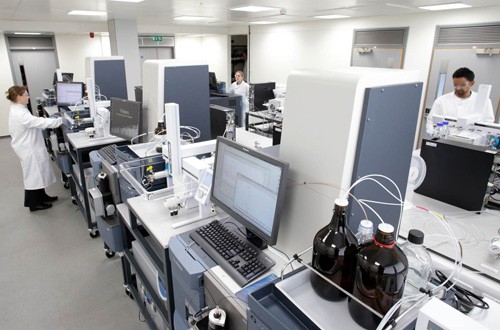
A UK research facility that will investigate the interface between genes and the environment was officially opened in the UK yesterday.
The MRC-NIHR Phenome Centre was formerly used by GlaxoSmithKline (GSK) to test samples from athletes competing in the 2012 Olympics in London, but has now been repurposed as an industrial-scale metabolic phenotyping centre able to analyse up to 100,000 blood and urine samples every year.
The resulting phenomes – a snapshot of people’s genes, the chemicals produced in their bodies and exposure to substances in the environment – will help scientists to determine the underlying biochemical processes that lead to disease.
The centre has been provided with funding of £10m ($15.4m) over the next five years by the UK Medical Research Council (MRC) and National Institute of Healthcare Research (NIHR), and will provide phenotyping services to researchers both in the UK and around the world.
“The sequencing of the human genome generated a lot of excitement among scientists and the public, but studying our genes has revealed less than we had hoped about common diseases such as cancer, diabetes and heart disease,” according to the unit’s director Professor Jeremy Nicholson of Imperial College London (ICL).
“By studying the phenome we can examine the effects of our genes, our lifestyle and our environment,” he said.
“What we discover about the causes of disease can be used to inform healthcare,” he added.
For example, tying genetic and environmental data together will allow clinicians to switch a patient from an ineffective therapy to another treatment and – eventually – make better predictions about which treatments will work for patients based on their phenome.
The lab is located at ICL and will be operated with support from King’s College London and two laboratory technology companies, Waters Corp and Bruker BioSpin, that have supplied nuclear magnetic resonance and mass spectrometry equipment to the lab.
The capabilities of the centre are already being exploited in a project being run by Professor Nilesh Samani of the University of Leicester that is looking at phenomes from 2,000 volunteers to investigate the genetics of high blood pressure.
Comparing the types and levels of chemicals in blood and urine samples with genetic sequence and lifestyle information should yield new insights into the way high blood pressure develops.
“We already know that high blood pressure is partly caused by genes and partly by lifestyle and environmental factors, but we really don’t understand how these interact at the protein and molecular level to raise blood pressure,” said Prof Samani.
The data from these sorts of studies will be used to direct drug research but also treatment and prevention strategies that could have an impact at the population level, according to Nicholson.
The MRC-NIHR Phenome Centre will also aid in the discovery of new biomarkers that could accelerate drug development and the move towards personalised therapies, and help guide the development of new analytical and diagnostic approaches, he said.




